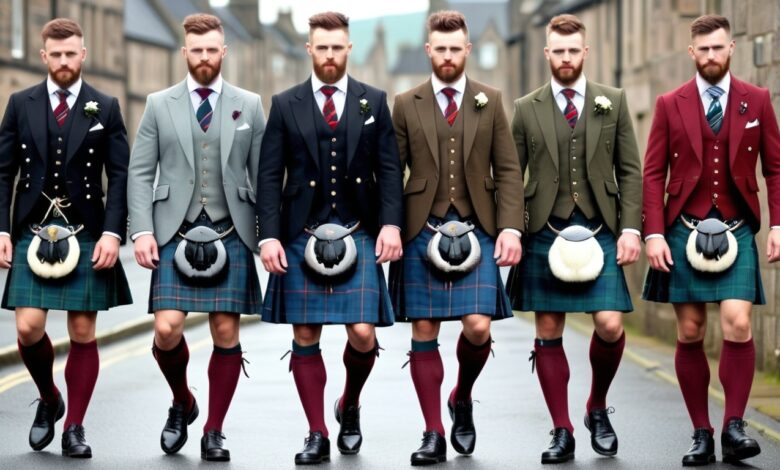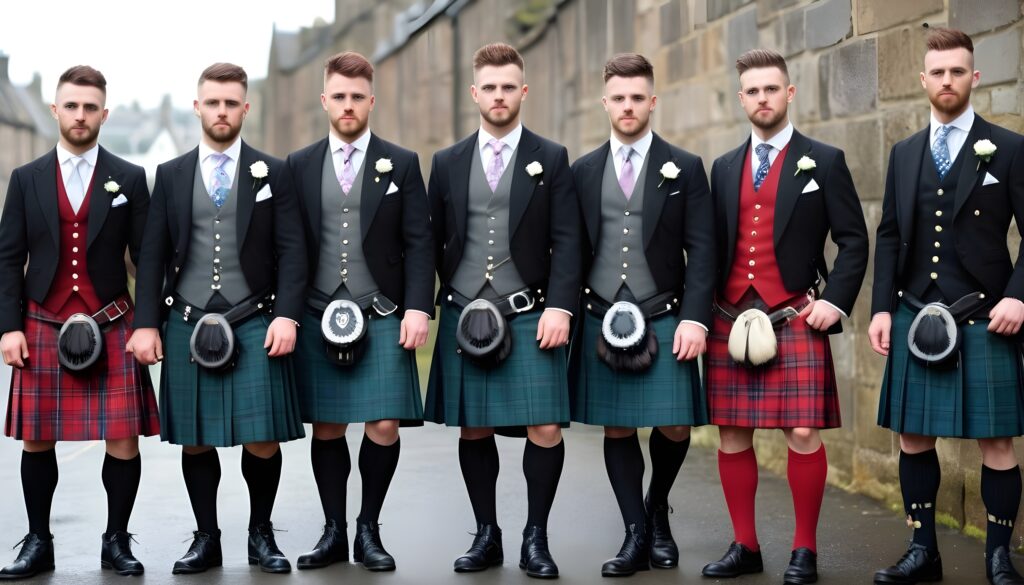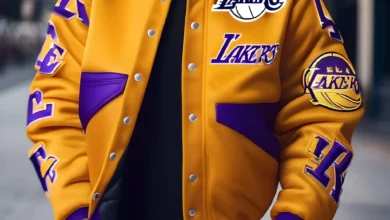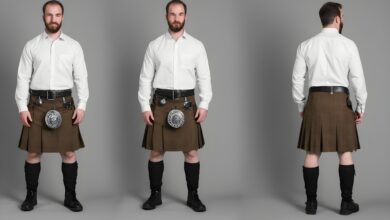Exploring the Diversity of Scottish Dress Codes

Scotland’s cultural identity is intricately woven into the vibrant tapestry. It presents a fascinating panorama that goes beyond the iconic kilt. Beyond the tartan patterns lie stories of heritage and regional pride. It’s a legacy that transcends generations. This journey delves deeper into the diverse realms of Scottish dress codes. It navigates through historical roots, iconic ensembles and regional variations. It contemporary interpretations that collectively shape the sartorial narrative of this remarkable nation.
A Glimpse into History
The narrative of Scottish dress codes unfolds against the backdrop of history. Where garments are not just fabrics but storytellers echoing the triumphs and tribulations of a nation. The evolution of Scottish attire a reflection of societal changes and influences. It began with the emergence of the kilt. Initially associated with Highland clans. The kilt Outfits became a symbol of regional identity and a powerful link to the past.
The Iconic Kilt Outfits
Traditional Highland Attire
The cornerstone of Scottish dress is synonymous with the kilt, sporran, jacket and accessories like the sgian-dubh and brogues. The kilt woven from tartan fabric serves as a visual tapestry of clan affiliations and regional pride. The sporran, both functional and ornamental. It adds a distinctive touch to the ensemble. The sgian-dubh and brogues complete the Highland look with finesse.
Lowland Elegance
In the Lowland regions, a different form of elegance emerges. Lowland dress codes favor tailored jackets, trousers, and vests, steering away from the traditional kilt. This alternative approach emphasizes a refined and formal appearance, with solid colors taking precedence over tartan patterns. The elegance of Lowland attire complements the rugged charm of the Highlands, creating a dynamic spectrum of Scottish fashion.
Beyond Kilts: Regional Variations
Western Isles
Venturing into the Western Isles unravels dress codes influenced by a fusion of Norse and Gaelic cultures. The feileadh-mòr, a long belted plaid, once adorned the inhabitants, offering a glimpse into the diversity that defines Scottish attire. The Western Isles’ unique contribution adds further layers to the rich tapestry of regional variations.
Shetland and Orkney
The islands of Shetland and Orkney boast dress codes. Garments like the Shetland kirtle and the Orkney hood showcase the interplay between Scottish and Nordic influences. These lesser-known regional variations contribute to the mosaic of Scottish attire, underscoring the diversity embedded in its roots.
Modern Interpretations
Contemporary Highland Fashion
In the 21st century Scottish dress codes have undergone a metamorphosis. Embracing modern aesthetics without severing ties to tradition. Contemporary Highland fashion blends classic tartans with innovative cuts. It creates garments that bridge the gap between past and present. Designers play a pivotal role in revitalizing and reinventing traditional elements. It ensures that Highland attire remains relevant and captivating.

Global Impact
The influence of Scottish dress codes extends far beyond the shores of Scotland. From catwalks to casual wear, elements like tartan patterns, kilts, and tailored jackets have permeated global fashion. The resonance of Scottish attire in diverse cultural contexts attests to its timeless appeal and the enduring legacy it imparts to the world.
Preserving Tradition and Cultural Significance
Cultural Events and Celebrations
The heartbeat of Scottish dress codes quickens during cultural events and celebrations, where they take on a central role in preserving tradition. Weddings, ceilidhs, and Highland Games become platforms for individuals to don meticulously chosen outfits, weaving familial and regional stories into the fabric of these joyous occasions.
Educational Initiatives
Efforts to educate and promote awareness about Scottish dress codes play a crucial role in their preservation. Schools and cultural institutions emphasize the significance of traditional attire, ensuring that younger generations understand and appreciate the stories woven into each fabric. Educational initiatives not only pass on cultural knowledge but also contribute to the continued relevance of Scottish dress codes.
Innovations in Scottish Fashion
Modern Materials and Designs
Innovations in materials and designs have breathed new life into Scottish fashion. While traditional fabrics like wool and tweed continue to hold their place. It’s modern interpretations incorporate a diverse range of materials. Designers experiment with textures, colors and patterns. It offers a fresh perspective on classic Scottish attire.
Sustainable Practices
As the fashion industry embraces sustainability Scottish designers are integrating eco friendly practices into the creation of traditional garments. From ethically sourced fabrics to environmentally conscious manufacturing. It’s a growing awareness of the impact of fashion on the environment even within the realm of Scottish dress codes.
Conclusion: The Tapestry of Scottish Elegance
In the exploration of the diversity of Scottish dress codes, one embarks on a journey through time, tradition, and innovation. Beyond the superficial layers of fabric lie tales of resilience, pride, and the collective identity of a nation. The iconic kilt outfits, regional variations, and contemporary interpretations weave a tapestry of elegance that transcends borders. Scottish attire is not just about clothing it’s a cultural legacy. A living narrative that continues to captivate and inspire, reminding us that the threads of history. Intricately woven into the very fabric of this timeless sartorial tradition.
To get the perfect Scottish dress that enhance your personality consider utilitykilt as your brand. As they have variety and quality both at one place




